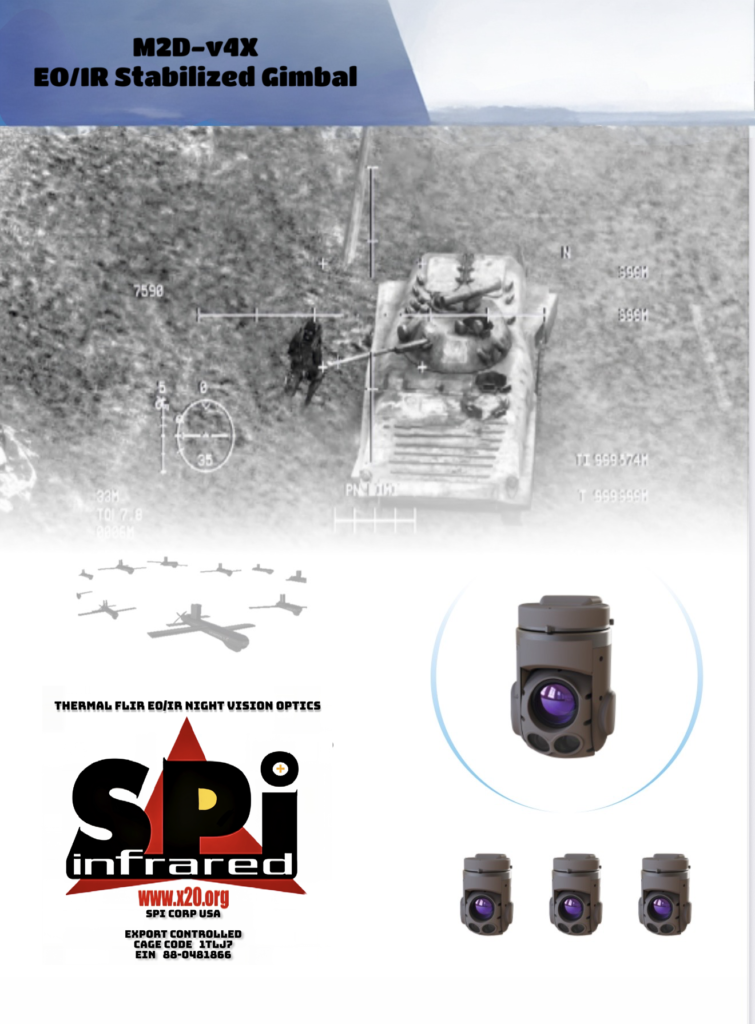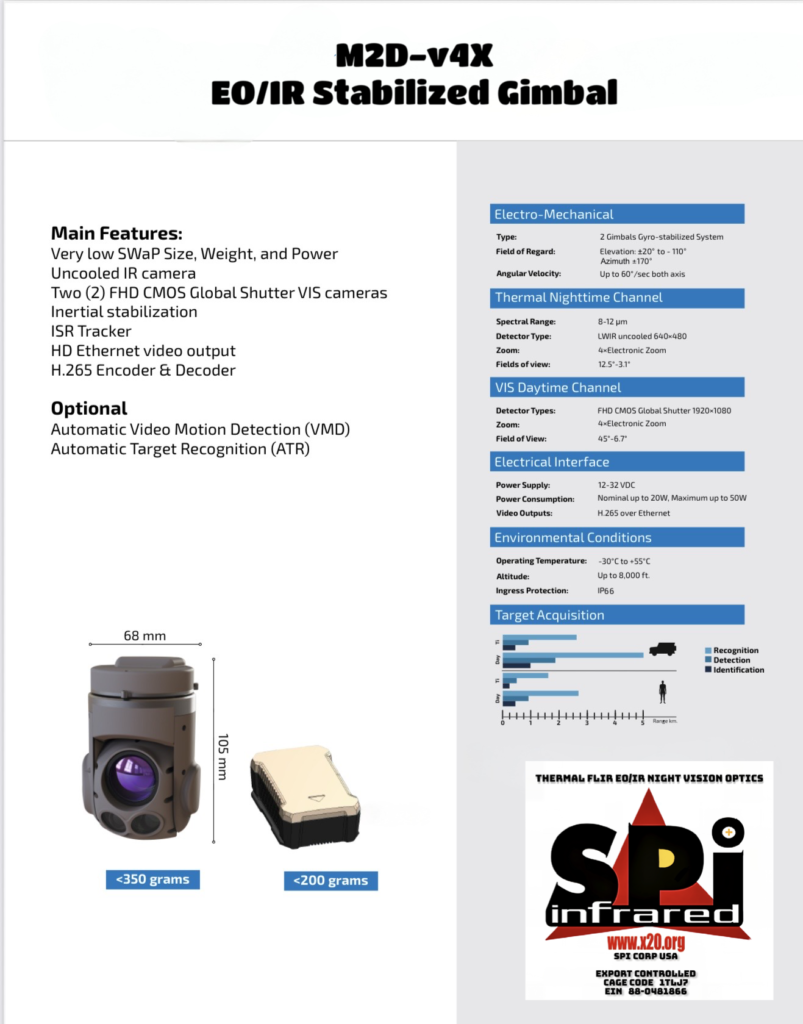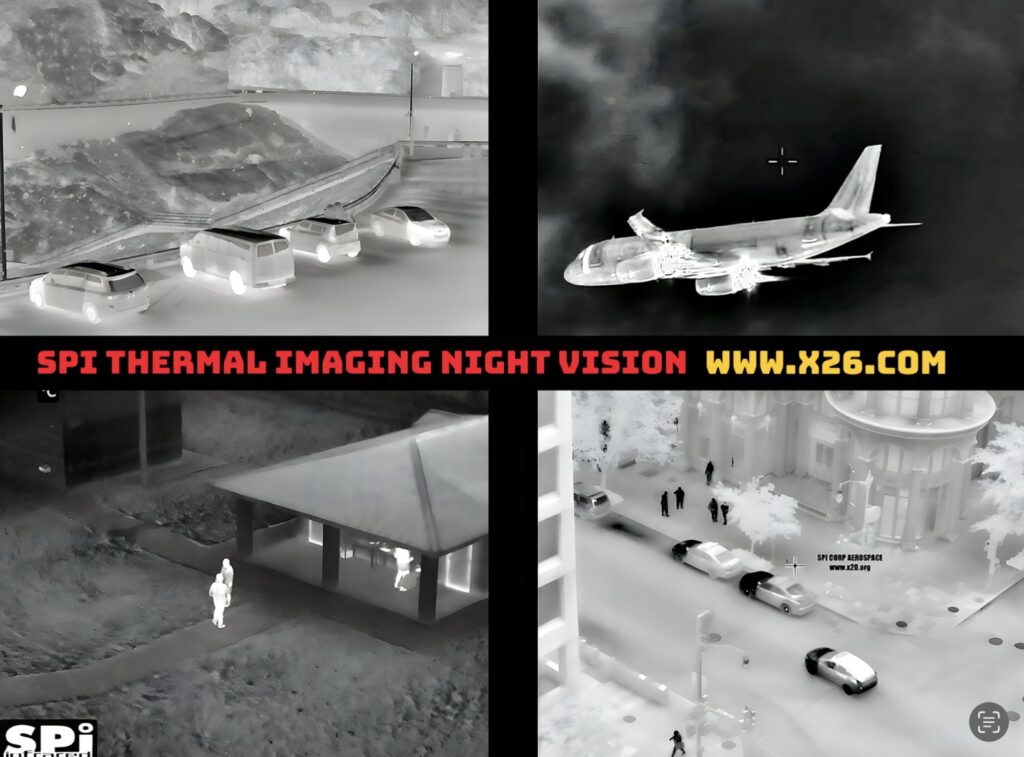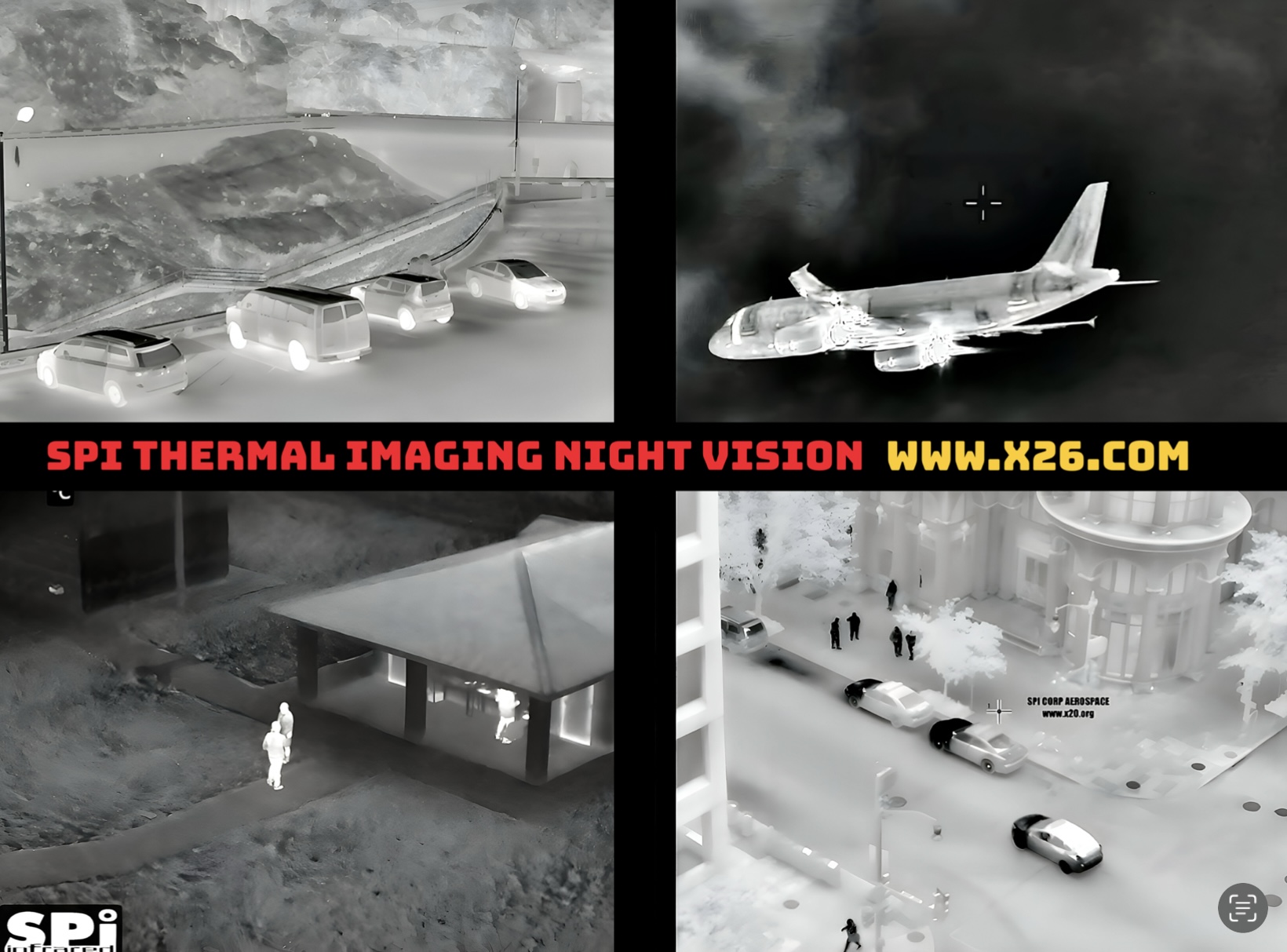


Subject: Evolution of SPI M2D EO/IR Payloads for Manned and Unmanned Systems
Overview
Modern and emerging unmanned systems—including UAVs, UAS platforms, drones, and robotic assets—depend on electro-optical/infrared (EO/IR) payloads to conduct surveillance, reconnaissance, target acquisition, and threat detection missions across multi-spectral domains. These sensor suites provide critical visual and thermal intelligence, enabling real-time obstacle avoidance, IED detection, and enemy identification under varying operational conditions.
Operational Requirements
Sensor designers face increased demands to develop long-range EO/IR payloads capable of operating within strict size, weight, and power (SWaP) constraints. SWaP efficiency is particularly vital for airborne platforms, which are expanding rapidly in both military and dual-use sectors (e.g., law enforcement, agriculture, remote sensing, and event security).
Current Demands and Capabilities
Next-generation sensor payloads must not only be lighter and smaller but also deliver enhanced performance. Mission sets now require compact, multi-spectral gimbals integrating high-resolution EO cameras, uncooled/cooled FLIR, SWIR, and even hyperspectral sensors. Tactical UAS and Group 1–3 platforms supporting dismounted units increasingly demand ruggedized, all-weather payloads capable of immediate deployment and rapid thermal cycling—from tarmac heat to sub-zero flight altitudes.
Design and Engineering Challenges
To meet these demands, manufacturers are transitioning toward lightweight materials, precision miniaturization, and robust electromechanical assemblies. COTS components rarely meet the environmental or performance thresholds, driving continued investment in hardened, mission-specific optics and stabilized platforms. Designers are optimizing custom payloads to balance up-front cost with mission effectiveness, long-term endurance, and battlefield survivability.
Technology Evolution
SPI’s EO/IR gimbal payloads continue to advance across visible, low-light, SWIR, MWIR, and LWIR spectrums. Our systems integrate CCD, BSTFA, color sensors, and stabilized laser components into compact, ruggedized formats. Cooled and uncooled thermal cores are becoming smaller and more sensitive, enabling deployment across increasingly mobile and disaggregated ISR operations.
Mission Integration
Our EO/IR gimbals support a wide range of manned and unmanned ISR platforms—ground vehicles, airborne assets, maritime systems, and fixed installations. All systems are engineered for 24/7, all-weather operation with emphasis on durability, low-latency imagery, and precision targeting.
Contact
For information on SPI’s affordable, field-proven EO/IR solutions for tactical and strategic ISR missions, contact us directly. Systems are available in a variety of configurations to meet SWaP, range, and environmental requirements across all domains.
